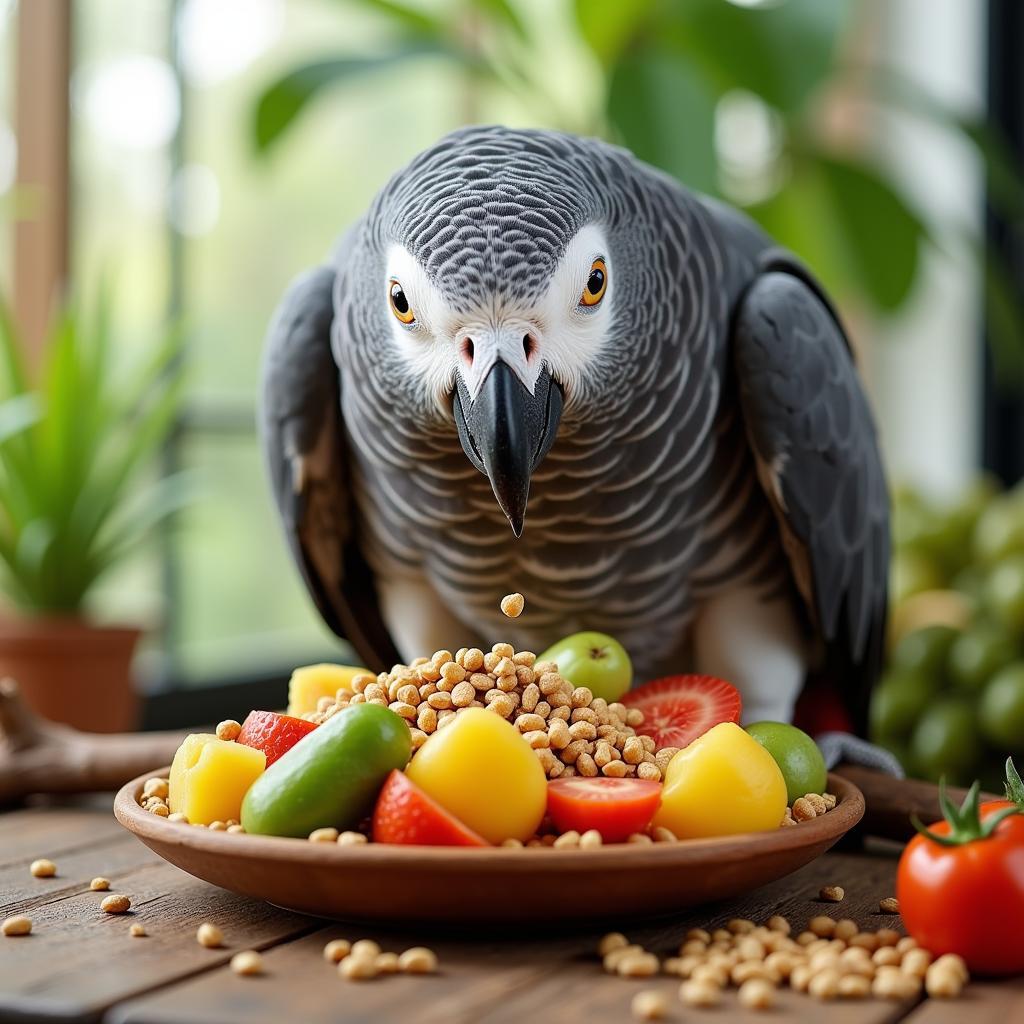Exploring the Diversity of African Staple Foods
African cuisine is as diverse as the continent itself, with each region boasting unique flavors and culinary traditions passed down through generations. At the heart of this culinary tapestry lie the African Staple Foods, a cornerstone of daily meals and cultural celebrations. These essential ingredients vary significantly across the continent, reflecting the geographical diversity, climate variations, and rich cultural heritage of each region.
From the sun-kissed plains of East Africa to the bustling markets of West Africa, let’s embark on a culinary journey to discover the diverse world of African staple foods.
A Continent of Flavors: Unveiling Regional Variations
West Africa: This region is renowned for its hearty and flavorful dishes, often featuring fufu. This versatile food, made from pounded yams, cassava, or plantains, is a blank canvas for a medley of stews and soups, like the rich peanut-based sauces found in Senegalese cuisine. Rice also plays a significant role, particularly in the Sahel region, often accompanied by grilled meat or fish. Don’t miss out on trying African fufu, a culinary adventure in itself.
East Africa: Corn (maize) reigns supreme in this region, enjoyed in various forms like ugali, a stiff porridge, or mandazi, fried dough. These starchy staples are typically served with flavorful stews, often featuring beans, lentils, or meat. In the highlands, you’ll find abono african food, a unique and nutritious staple. Coastal areas boast an abundance of seafood, adding another dimension to East African cuisine.
Southern Africa: This region is known for its love of meat, particularly beef, often grilled to perfection in the traditional braai. Maize-based dishes like pap (similar to ugali) are prominent, as are root vegetables like cassava and sweet potatoes. The coastal regions offer a bounty of seafood, often incorporated into curries and stews.
North Africa: Influenced by Mediterranean and Middle Eastern flavors, North Africa presents a unique culinary landscape. Couscous, a small-grained pasta, is a staple, often paired with flavorful tagines, stews slow-cooked in earthenware pots. Flatbreads like khobz are essential, used to scoop up dips and sauces.
Beyond Sustenance: The Cultural Significance of African Staple Foods
African staple foods are more than just sustenance; they are deeply woven into the social fabric of the continent.
-
Community and Sharing: Meals are often communal affairs, with large platters of food shared amongst family and friends, reinforcing bonds and fostering a sense of togetherness.
-
Celebrations and Rituals: Many staple foods play a central role in traditional ceremonies and celebrations. For example, in some cultures, fufu african food is an essential part of wedding feasts, symbolizing unity and prosperity.
-
Agricultural Heritage: The cultivation of staple foods is deeply intertwined with the agricultural heritage of African communities, reflecting their close relationship with the land and their ability to adapt to diverse environments.
-
Economic Importance: Staple foods form the backbone of many African economies, providing livelihoods for farmers and traders alike.
Embracing the Future: Adapting to Changing Times
As the world evolves, so too does the culinary landscape of Africa. While traditional African staple foods remain deeply rooted in culture, there’s a growing movement towards incorporating modern influences and addressing contemporary challenges.
-
Nutritional Diversity: There’s an increasing focus on diversifying diets and incorporating more fruits, vegetables, and other nutrient-rich foods alongside traditional staples to address nutritional concerns.
-
Sustainable Agriculture: Promoting sustainable farming practices and preserving indigenous crops are crucial steps in ensuring food security and protecting the environment.
-
Culinary Innovation: Chefs across Africa and the diaspora are reimagining traditional recipes, incorporating local ingredients in innovative ways, and introducing African staple foods to a global audience.
African Staple Foods: A Journey of Discovery Awaits
African staple foods offer a captivating glimpse into the continent’s rich culinary heritage. From the familiar comfort of rice and corn to the unique flavors of fufu and couscous, each ingredient tells a story of cultural adaptation, resilience, and culinary ingenuity.
As you explore the diverse world of African staple foods, embrace the opportunity to expand your palate, appreciate the cultural significance of each ingredient, and celebrate the culinary tapestry of this remarkable continent.
FAQ: Delving Deeper into African Staple Foods
1. What is the most common staple food in Africa?
While it varies by region, maize (corn) is widely consumed across the continent, followed by rice and cassava.
2. Are African staple foods healthy?
Like any food group, it depends on the preparation method and overall diet. Many African staple foods, like cassava and plantains, are good sources of carbohydrates and essential nutrients.
3. Where can I try authentic African staple foods?
Look for African restaurants in your area or explore online recipes to recreate these dishes at home. You can also find some unique ingredients, like african banana, online.
4. How are African staple foods adapting to modern times?
There’s a growing movement towards incorporating more diverse ingredients, promoting sustainable agriculture, and reimagining traditional recipes for a modern palate.
5. Why are staple foods so important in African culture?
They are not just food but represent cultural identity, community, and a connection to the land.
Explore More About African Cuisine
- About african tirbal fruit casavana: Learn more about the history and cultural significance of cassava, a vital staple food in many parts of Africa.
Do you have other questions about African staple foods or African cuisine? We’d love to hear from you!
Contact us at +255768904061, kaka.mag@gmail.com, or visit us at Mbarali DC Mawindi, Kangaga, Tanzania. Our dedicated team is available 24/7 to assist you.
